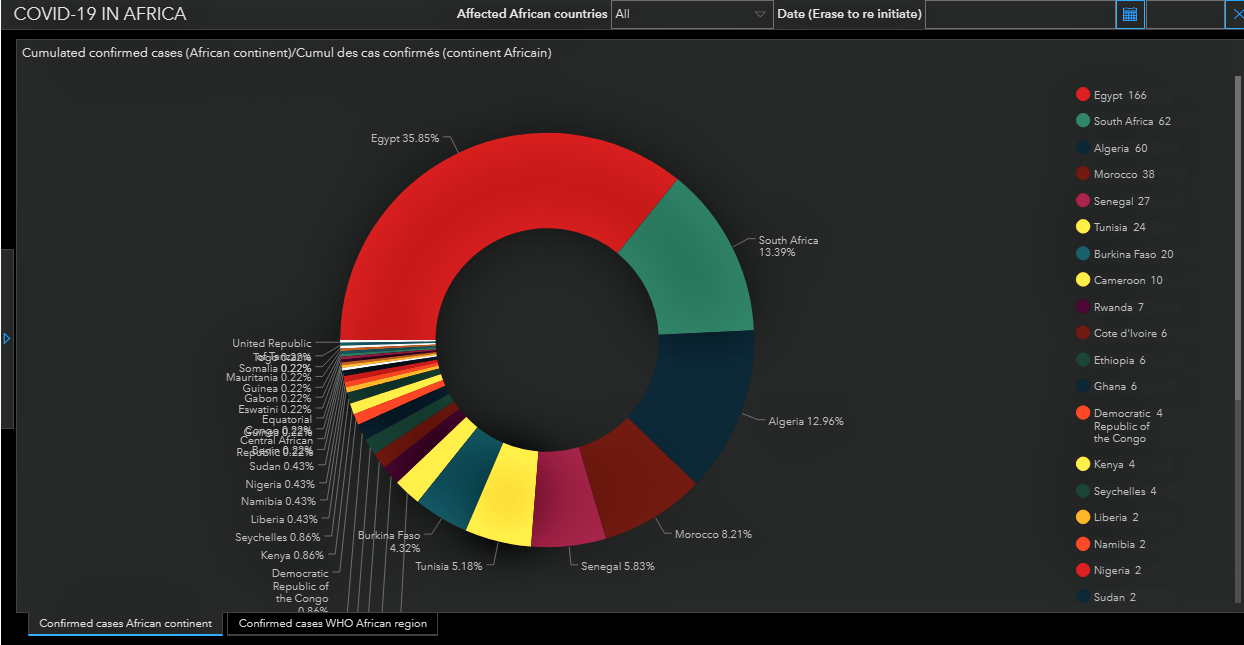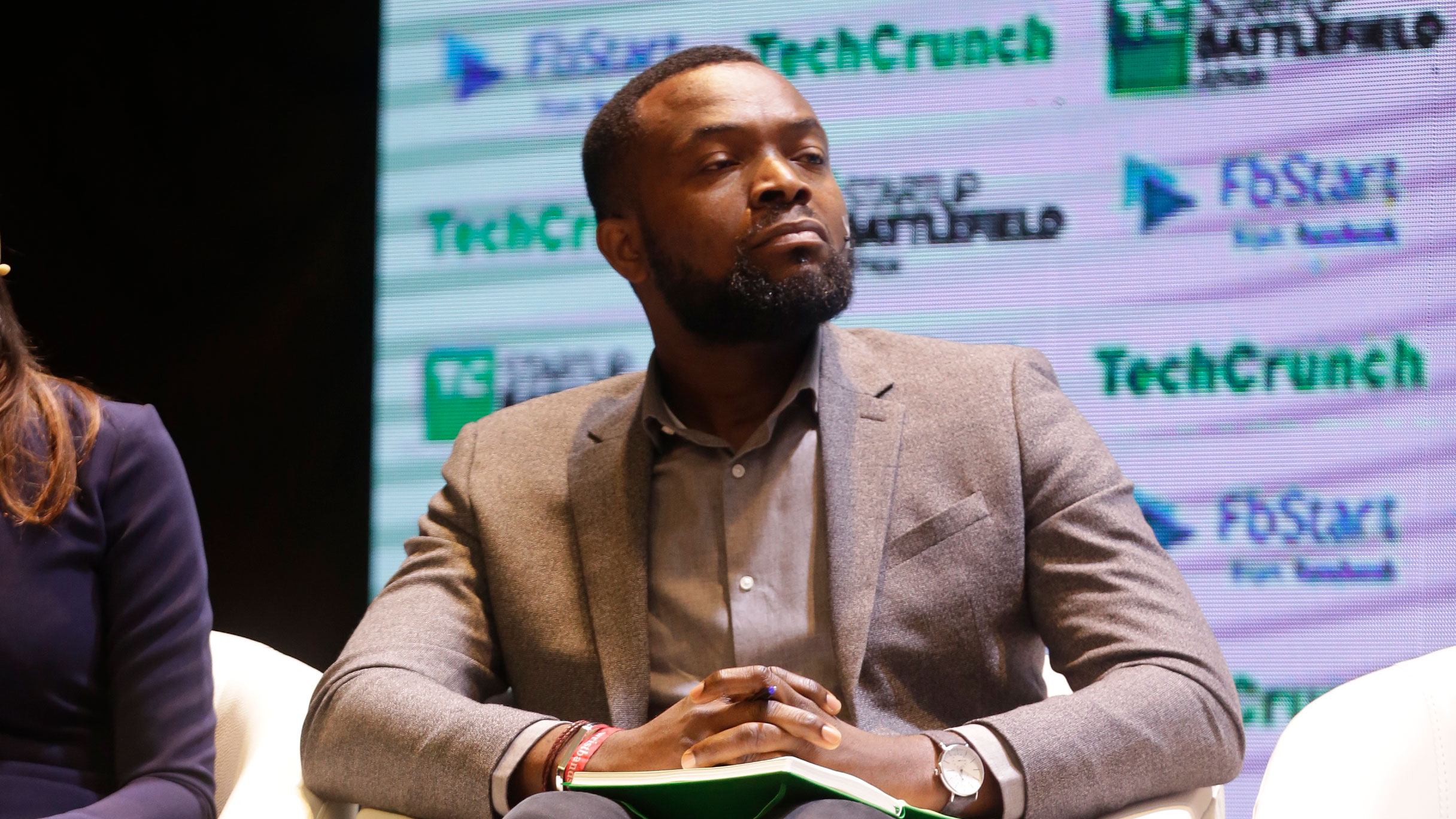Music
Trailers
DailyVideos
India
Pakistan
Afghanistan
Bangladesh
Srilanka
Nepal
Thailand
Iraq
Iran
Russia
Brazil
StockMarket
Business
CryptoCurrency
Technology
Startup
Trending Videos
Coupons
Football
Search
Download App in Playstore
Download App
Best Collections
Technology
SpaceX is launching its latest Starlink mission today, with a takeoff time of 8:16 AM EDT (5:16 AM PDT) currently scheduled to take place at Kennedy Space Center in Florida. The launch will carry 60 more Starlink broadband internet satellites to their low Earth orbit destination, using a Falcon 9 rocket with a booster that flew four times previously, including twice in 2018 and twice last year, most recently in November for another Starlink mission. This is the second launch attempt for this mission, after a scrubbed attempt on Sunday due to an engine power issue, and therea backup launch opportunity set for Thursday at 7:56 AM EDT should this try encounter any issues or weather delays.
SpaceX is proceeding with this launch despite the ongoing COVID-19 pandemic, which late on Tuesday prompted NASA to move to a ‘Stage 3& condition across all of their facilities, which mandates telework for all agency employees except for those whose presence on site are mission critical for operations.
This launch will include a landing attempt for the Falcon 9 booster, meaning if all goes well SpaceX could recover it for a fifth time for an attempt at refurbishment and re-use. Five flights of a Falcon 9 booster would be a record for SpaceX & and the booster that itattempting this mission with is already a record-holder, since it achieved SpaceXexisting high-water mark for re-use with its last November launch.
The primary mission is to deliver the sixth batch of 60 of SpaceXStarlink satellites to space, which will grow the total constellation size to 360. SpaceX plans to begin commercial operation of the constellation later this year if all goes well, providing high-speed, reliable broadband internet to customers in North America, with lower latency and better speeds than are available using existing satellite internet service, which depend on larger, geosynchronous satellites placed much farther out from Earth.
SpaceX will also be aiming to recover the two fairing halves used to protect the satellite cargo on this launch, using two ships stationed at sea that have large nets strung across struts extending from their surface. SpaceX has been attempting these recoveries in order to further increase the reusability (and reduce the cost) of launch but so far it hasn&t had much consistency in its success, catching three fairings in total. The fairing being used today flew before, too & during the May 2019 Starlink satellite launch.
The broadcast of the launch will begin above around 15 minutes prior to the target takeoff time, so at around 8:01 AM EDT (5:01 AM PDT).
- Details
- Category: Technology Today
Read more: Watch SpaceX launch 60 more Starlink satellites and attempt a Falcon 9 re-use record
Write comment (97 Comments)The 2019 Turing Award, one of the highest honors in computing, was today awarded to Pat Hanrahan and Ed Catmull, founding members of Pixar who helped shape the future of computer graphics. The two will share a $1M prize and of course the satisfaction of receiving this prestigious award for doing something they clearly love.
The award has recently been given to such luminaries as Tim Berners-Lee, cryptographer Martin Hellman, and last year, AI pioneers Yoshua Bengio, Geoffrey Hinton, and Yann LeCun.
Catmull was at Pixar for more than 30 years, appointed its president from the very beginning as a LucasFilm animation studio bought and repurposed by Steve Jobs. Hanrahan was an early hire, and between them the two would have had enormous effects on the world of CG, even if they hadn&t built the poster child for the technology.
I spoke with Catmull and Hanrahan about the origins of the field and their early work in it that the Association for Computing Machinery chose to recognize this year.
&When I started out, graphics didn&t really exist,& Hanrahan recalled. &I sort of discovered graphics in grad school, but there were no professors, no classes, it wasn&t even in the computer sciences, really.&
&CG wasn&t thought of as being at the same level as new architectures and languages,& said Catmull. &But we believed that it was going to fundamental tool going forward. it just took a long time to get here.&
That belief was shared by George Lucas, who hired Catmull to work on CG imagery way back in 1979. It wasn&t until 1986 that Pixar was formed and Hanrahan joined the team.

Hanrahan was only at Pixar for a few years, but during that time created several of the tools and techniques that essentially made modern CG imagery possible. The system for which he was the architect, RenderMan, was what enabled the complex lighting and shaders to be used, making a final image with a far more realistic feel than any that had come before. For anyone curious about the name, Hanrahan has a funny story:
&When I came out to California I ran into Jaron Lanier, he actually came up to Pixar, and got me all excited about VR,& he said. &Around that era you had the Walkman, the Discman, and Jaron said, what we need is a ‘RenderMan,& you hang it on your belt and just put on the glasses and it renders these unbelievable scenes. But nobody else really liked the word RenderMan, so I got a lot of flak about that. I&m certainly not in marketing.&
Catmullcontributions were equally important; as a researcher, he had established early techniques for Z-buffering in 3D environments (itreally important) and texture mapping, one of the most fundamental processes to realistic CG graphics. Early on, as a graduate student, he built a new way of representing polygonal surfaces as smooth shapes that seemed lost to time… until years later it was iterated on by another researcher, who was hired by Catmull and brought the technique with him.
&It was so successful they switched out what they were doing with BugLife,& Catmull said. &I was so busy building the company and making movies and so on, I wasn&t even aware until last year when the MPAA gave an award to me for developing these techniques, which are now the dominant technique in all animation.&
Clearly the mark these two left on the world of CG and moviemaking is considerable, but what they are most proud of, they told me, is nurturing the overlap between creativity and technology in their respective fields.
&What I&m most proud of is keeping an environment in Pixar where we kept the technology and the art in balance for so many years,& said Catmull. &We established a relationship between a group of artists who want to do something new and technical people that work on things people normally don&t see. It leads to this really phenomenal dynamic between the two.&
Hanrahan, for his part, looks back on a fruitful academic career and later, founding Tableau.
&I&m most excited about my teaching,& he said. &I just graduated my 40th grad student. They&ve gone off and done amazing stuff, I mean out of my group we&ve started 16 companies, and many are professors of computer graphics and so on. And Tableau was a huge thing for me — I think just building a company thatpart of the community and a good place to work, that stands out to me more than my technical achievements.&
I&ll be posting more of our wide-ranging interview soon. For now, congratulations to to the pair for their wide-ranging and influential work in computing and beyond.
- Details
- Category: Technology Today
Read more: Pixar CG leaders Pat Hanrahan and Edwin Catmull share $1M Turing Award
Write comment (98 Comments)Deepgram, a startup focused on high-quality, real-time speech recognition, announced a $12 million Series A this morning.
The startup, founded a half decade ago, according to Crunchbase data, with just a few million in raised capital, is interesting, as its success to date was founded on two consecutive experiments. The first dealing with its technology, and the second concerning its market.
Deepgram sits in the midst of our continuing conversation about AI-grounded companies, or at least companies that make use of deep learning. Letexplore its round, and how the company got to where it is today.
Foundations
Speech recognition has come a long way since terrible &90s headsets and trying to train Dragon Naturally Speaking to better let you dictate into Word documents. Startups like Otter.ai have taken speech recognition tooling and made it available to the masses. But, while Otter.ai is something that journalists love for its ease of use and modest price point, therestill something missing in the modern world of speech recognition.
Namely, improved accuracy. Otter and other services can do a fine job gisting a sound file into words and paragraphs, even working to differentiate between speakers. But itonly so good, and itretroactive. With most calls that I execute for TechCrunch, for example, I record the chat on my phone, export the audio, upload it to Otter.ai, leave it be and circle back later on to listen and clean up the text for use in an article. (Hereone, for example.)
What Deepgram can do is a bit heavier-duty, and is not aimed at journalists or other individuals. Instead, Deepgram has built a speech recognition tool that it claims is more accurate, and can handle real-time text input. It sells the tech to large companies.
TechCrunch spoke with Deepgram CEO Scott Stephenson about his companyproduct during our call about the round itself. Summarizing our chat, herewhat we found out. Instead of trying to improve existing tech — which doesn&t sport strong gross margins, the CEO said — Deepgram started from scratch, building a deep learning tool that, after a few years& work, was a step ahead of other speech recognition technologies in terms of accuracy.
Its investors agree. In a call with TechCrunch, NvidaJeff Herbst, who took part in the investment, said that Deepgram was &one of the best, if not the best& speech recognition companies around. Deepgram provides its services in two ways, hosted on its own hardware (the firm claims better margins by running its own metal, and, you now know why Nvidia is involved), and on-prem on client hardware. The startup is targeting enterprise call centers and voice platforms as customers.
It took time to prove the companytech, years in fact. Deepgram then spent another few years testing out its possible commercial appeal. It may seem obvious today that there would be demand for what Deepgram built, but Gong.io and other, similar services are only so old. Regardless, after about four years, the company was content that it had proven out its product and customer base. Or as Stephenson told TechCrunch, the &tech risk& that Deepgram faced is now behind it, as is its &market risk.&
Thatwhy the company raised now, so lettalk about the round.
The round
Deepgram$12 million investment was led by Wing VC. Other firms took part, including Nvidia as mentioned, and Y Combinator and SAP.
Whatthe money for? Adding staff, among other things. Deepgram has about 40 people today, but declined to tell TechCrunch how quickly it will scale personnel (oddly, as thata pretty standard question), saying instead that ithiring aggressively, with a focus on go-to-market and engineering. The firm also intends to use some of its Series A on hardware.
Whatfun is that Deepgram has what it considers to be a strong market position, now crossed with a pile of cash. How fast it can grow is now the question, and the first thing we&re asking the next time we speak with the firm.
- Details
- Category: Technology Today
Read more: Deepgram raises $12M for enterprise speech recognition
Write comment (100 Comments)
Magecart hackers have struck again, this time targeting the NutriBullet website.
According to new research by security firm RiskIQ, hackers broke into the blender makerwebsite several times over the past two months, injected malicious credit card-skimming malware on its payment pages and siphoned off the credit card numbers and other personal data — like names, billing addresses, expiry dates and card verification values — of unsuspecting blender buyers.
The data was scraped and sent to a third-party server, operated by the attackers. The stolen credit card data is then sold to buyers on dark web marketplaces.
NutriBullet fought back each time by removing the malicious code each time. But RiskIQ said that the hackers still have access to the companyinfrastructure, with its hackers targeting NutriBulletwebsite as recently as last week.
RiskIQ head of threat research Yonathan Klijnsma warned against using the site until the company &acknowledges our outreach and performs a cleanup.&
NutriBulletchief information officer Peter Huh confirmed the intrusions and that it had &launched forensic investigations& into the incident, and claimed it will &work closely with outside cybersecurity specialists to prevent further incursions,& but did not name the outside firm.
Huh and a spokesperson declined to answer our questions, specifically if customers would be notified of the security incident.
Itthe latest attack by Magecart, a group of groups rather than a single entity of hackers, all of which have different motivations and targets but all of which use largely the same tactics and techniques. There are eight known Magecart groups focused on stealing credit card numbers for profit, according to Klijnsma.
Hackers associated with Magecart tactics have in the past few years hit Ticketmaster, British Airways, the American Cancer Society and consumer electronics giant Newegg.
With the help of security outfits AbuseCH and Shadowserver, RiskIQ began efforts to take down the malicious domain that the hackers were using to send stolen credit card numbers. But Klijnsma acknowledged that the group, still with access to NutriBulletinfrastructure, can keep spinning up new malicious domains and re-infecting the site with credit card-scraping malware.
&They&re learning from past attacks to stay one step ahead,& said Klijnsma. &Iton the security community to do the same.&
- Details
- Category: Technology Today
Read more: Hackers struck NutriBullet website with credit card-stealing malware
Write comment (93 Comments)Israel has passed an emergency law to use mobile phone data for tracking people infected with COVID-19 including to identify and quarantine others they have come into contact with and may have infected.
The BBC reports that the emergency law was passed during an overnight sitting of the cabinet, bypassing parliamentary approval.
Israel also said it will step up testing substantially as part of its respond to the pandemic crisis.
In a statement posted to Facebook, prime minister Benjamin Netanyahu wrote: &We will dramatically increase the ability to locate and quarantine those who have been infected. Today, we started using digital technology to locate people who have been in contact with those stricken by the Corona. We will inform these people that they must go into quarantine for 14 days. These are expected to be large & even very large & numbers and we will announce this in the coming days. Going into quarantine will not be a recommendation but a requirement and we will enforce it without compromise. This is a critical step in slowing the spread of the epidemic.&
&I have instructed the Health Ministry to significantly increase the number of tests to 3,000 a day at least,& he added. &It is very likely that we will reach a higher figure, even up to 5,000 a day. To the best of my knowledge, relative to population, this is the highest number of tests in the world, even higher than South Korea. In South Korea, there are around 15,000 tests a day for a population five or six times larger than ours.&
On Monday an Israeli parliamentary subcommittee on intelligence and secret services discussed a government request to authorize IsraelShin Bet security service to assist in a national campaign to stop the spread of the novel coronavirus — but declined to vote on the request, arguing more time is needed to assess it.
Civil liberties campaigners have warned the move to monitor citizens& movements sets a dangerous precedent.
According to WHO data, Israel had 200 confirmed cases of the coronavirus as of yesterday morning. Today the countryhealth ministry reported cases had risen to 427.
Details of exactly how the tracking will work have not been released — but, per the BBC, the location data of peoplemobile devices will be collected from telcos by Israeldomestic security agency and shared with health officials.
It also reports the health ministry will be involved in monitoring the location of infected people to ensure they are complying with quarantine rules — saying it can also send text messages to people who have come into contact with someone with COVID-19 to instruct them to self isolate.
In recent days Netanyahu has expressed frustration that Israel citizens have not been paying enough mind to calls to combat the spread of the virus via voluntary social distancing.
&This is not childplay. This is not a vacation. This is a matter of life and death,& he wrote on Facebook. &There are many among you who still do not understand the magnitude of the danger. I see the crowds on the beaches, people having fun. They think this is a vacation.&
&According to the instructions that we issued yesterday, I ask you not leave your homes and stay inside as much as possible. At the moment, I say this as a recommendation. It is still not a directive but that can change,& he added.
Since the Israeli governmentintent behind the emergency mobile tracking powers is to combat the spread of COVID-19 by enabling state agencies to identify people whose movements need to be restricted to avoid them passing the virus to others, it seems likely law enforcement agencies will also be involved in enacting the measures.
That will mean citizens& smartphones being not just a tool of mass surveillance but also a conduit for targeted containment — raising questions about the impact such intrusive measures might have on peoplewillingness to carry mobile devices everywhere they go, even during a pandemic.
Yesterday the Wall Street Journal reported that the US government is considering similar location-tracking technology measures in a bid to check the spread of COVID-19 — with discussions ongoing between tech giants, startups and White House officials on measures that could be taken to monitor the disease.
Last week the UK government also held a meeting with tech companies to ask for their help in combating the coronavirus. Per Wired some tech firms offered to share data with the state to help with contact tracing — although, at the time, the government was not pursuing a strategy of mass restrictions on public movement. It has since shifted position.
- Details
- Category: Technology Today
Read more: Israel passes emergency law to use mobile data for COVID-19 contact tracing
Write comment (97 Comments)Africalargest innovation incubator, CcHub, will offer funding and engineering support to tech projects aimed at curbing COVID-19 and its social and economic impact.
The Lagos and Nairobi based organization posted an open application on its website this week, CcHub CEO Bosun Tijani told TechCrunch on a call.
CcHub will provide $5000 to $100,000 funding blocks to companies with COVID-19 related projects covering last mile communication, support for the infected and the most vulnerable, production of essential medical supplies and support for disrupted food supply-chains.
The organization, and its iHub affiliate, will also open up engineering support and resources from its CcHub Design Lab to funded companies, according to Tijani.
He noted that established startups who want to create COVID-19 related projects on the side of their core-business can apply.
The initiative stems from concerns Africa could be less prepared than other regions in dealing with an outbreak of the virus that has spread in China, Europe and the U.S. and is wreaking economic havoc globally.
Tijani hopes CcHub can employ its network and resources to limit the spread and damage of COVID-19 in Africa.
The Lagos based innovation-space acquired KenyaiHub in 2019, bringingtogether two of Africamost powerful tech hubs by membership networks, VC, volume of programs, startups incubated and global visibility.
&Quite a number of African countries, if they get to the level of Italy or the UK, I don&t think the system…is resilient enough to provide support to something like that,& Tijani said.

Reported cases in major population countries, such as Kenya and Nigeria, were in single-digits as late as last week, but those numbers are spiking. By the World Health Organizationlatest stats Wednesday there were 463 COVID-19 cases in Africa and 10 confirmed deaths related to the virus.
Governments are taking action. South Africa, which has the second-largest reported coranvirus outbreak on the continent, declared a national disaster this week, banned public gatherings and announced travel restrictions on the U.S. and UK. Kenya has also imposed its own travel and crowd restrictions.
Only two cases have been recorded in Nigeria, but CcHubTijani fears the actual scenario for the West African country and Kenya could be much worse.

&I think Lagos and Nigeria are in denial. Some governments in Africa are taking action, but the focus in Africa has been relying on port of entry [measures], which isn&t reliable because…I suspect its already here…people may not have symptoms yet,& said Tijani.
If there is a rapid outbreak, he fears it will overwhelm a number of systems in countries such as Nigeria and Kenya.
&We don&t have the health systems to contain it. We don&t have the the welfare system that can work for the most vulnerable, such as elderly…we don&t manufacture most of these medical supplies and our food [supply-chain] is not reliable,& Tijani added.
Addressing these pending challenges related to COVID-19 in Africa is what CcHub hopes to support in its latest open call to fund projects.
The innovation incubator isn&t the only tech player on the continent shifting to respond to a possible coronavirus crises.
Pan-African on-demand trucking logistics company Kobo360 has asked employees who can work remotely to do so in Ghana and Nigeria, according to the Chief Strategy Officer Kagure Wamunyu. The Goldman Sachs backed startup is also planning contingencies to ensure supply-chain continuity, should COVID-19 disrupt business and mobility in its markets.
In Kenya, the country is turning to its leading mobile-money product,M-Pesa, to reduce the the chances of an outbreak. Safaricom waived transaction fees on the app this week to increase digital-payments use and lower the risk of spreading the COVID-19 through physical handling of cash.

- Details
- Category: Technology Today
Read more: CcHub funds tech to curb COVID-19 on concerns of an Africa outbreak
Write comment (96 Comments)Page 1206 of 1446

 19
19





